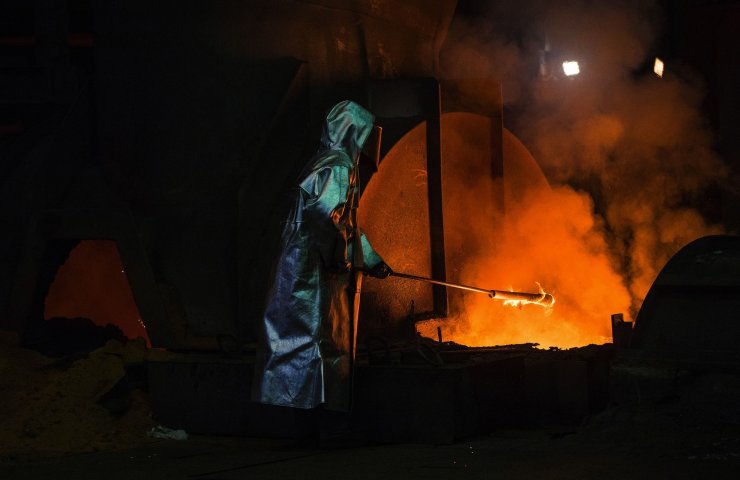The steel that transformed everything from guns and bridges to cities and shipping in the late 19th century is also critical to wind turbines, solar panels, and electrical pylons needed to displace fossil fuels. But steel itself depends on burning billions of tons of coal, and the steel industry emits more carbon dioxide than all cars, buses and motorcycles combined.
The transition of a low-margin industry from cheap coal to more expensive, environmentally friendly steel production technologies will require strong government support and concerted action by steel producers around the world.
Last year, five of the six largest steel producers supported the Paris Agreement, pledging to achieve zero emissions by 2050. US President Joe Biden and Chinese President Xi Jinping are pushing hard to cut greenhouse gas emissions, while the European Union plans to impose import duties on metal products made in countries with lower environmental standards, making local low-emission steel more competitive.
According to a preliminary draft communiqué, the G7 countries, whose leaders are negotiating in the UK this weekend, are planning to take steps to decarbonize steel and other industrial sectors. Political momentum could not have emerged at a more important time, as renewable energy technologies require even more steel per unit of energy they produce than fossil fuels.
But there is still a long way to go. We figured out how to get the steel to zero in a series of diagrams showing the enormity of the problem.
Modeling by BloombergNEF shows that 1.7 billion tonnes of steel will be required to build enough wind turbines to reach zero by 2050. Solar panels and supports for the expansion of electrical networks are also made of steel.
How much steel will be required for green energy installations
The green technology needed to achieve net zero by 2050 requires massive amounts of steel.
Note: Calculations based on BNEF forecasts for the use of technologies in accordance with the new climate scenario and changes in the intensity of steel production.
Sources: BNEF, goldengate.org, Bloomberg calculations.
China will play a key role in decarbonizing the steel industry as it produces more than half of the world's steel.
Baowu Steel Group, China's National National Champion and # 1 manufacturer in the world, is among the steelmakers committed to carbon neutrality by 2050, a decade ahead of President Xi's goal for the country as a whole. Baowu has been at the forefront of technological change in China's industry for decades and could play a pivotal role in realizing the country's green ambitions.
Beijing is aiming for carbon emissions to peak carbon emissions by 2025, and is aiming for a 30% reduction in emissions by 2030. This is a daunting task as the industry is dominated by coal-fired blast furnaces that will be difficult to convert, and many of which have only a few years of useful use.
“Industry is following what is happening in China with great interest, simply because of the sheer size of Chinese industry,” said Benedict Zeumer, consultant at McKinsey & Co. action ".
The steel industry is gradually moving towards zero
Steel production in 2020, metric tons
Note. Chinese steelmakers have set a goal of reducing emissions by 30% by 2030. * Long-term specific numerical target to reduce greenhouse gas emissions by a significant fraction of current levels.
Source: World Steel Association.
Some European and North American steelmakers, such as Nucor Corp., who use recycled steel in electric arc furnaces, face less of the challenge: finding greener sources of energy. But even if every piece of scrap available was recycled, more than half of the world's steel in 2050 would still have to be smelted through iron ore.
As a result, companies including ArcelorMittal SA, POSCO and Nippon Steel Corp. are looking for ways to replace traditional blast furnaces that inject carbon with ore in the form of coal or carbon monoxide, creating pure liquid iron at temperatures above 1000 degrees Celsius ( 1832 degrees Fahrenheit). Carbon captures oxygen atoms in the ore and is released into the atmosphere in the form





